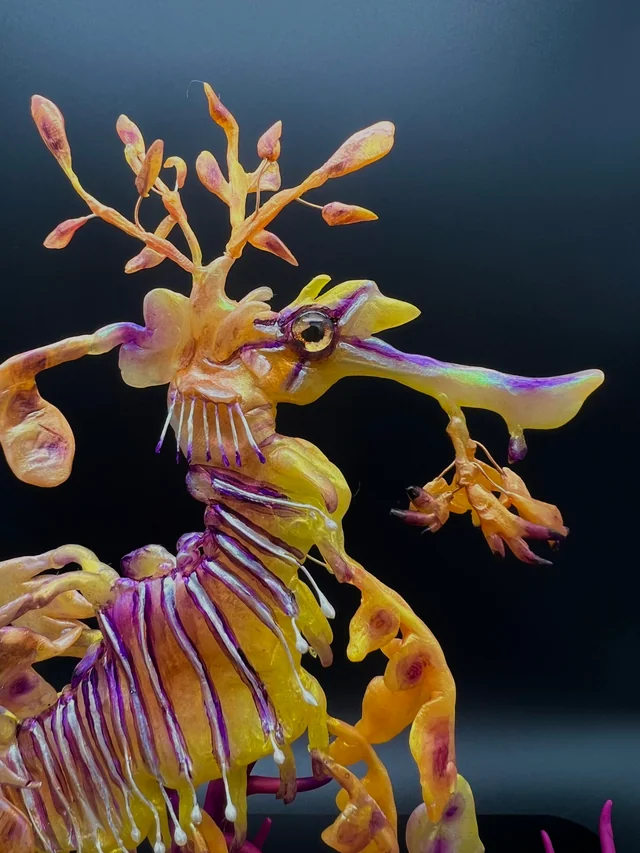How Bis is “BIG?” Exploring the Largest mammal in the world

From the depths of the ocean to the vast expanses of the savannah, tales of colossal creatures have captivated the human imagination for centuries. Yet amidst the myriad of contenders, one question looms large: which is the largest mammal in the world? The blue whale, with its astonishing size and majestic presence, reigns as the undisputed largest mammal in the world, captivating our imagination with its sheer enormity.
From the majestic blue whale, whose colossal proportions defy comprehension, to the towering African elephant, a titan of the savannah, each contender for the title of largest mammal offers a glimpse into the awe-inspiring diversity of life on our planet.
In the vast expanse of the natural world, few creatures captivate the imagination like the largest mammals. Their sheer size and presence evoke wonder and curiosity, driving us to delve deeper into their existence.
Fascination with the Colossal Creatures of the Animal Kingdom
From the towering elephants of the savannah to the majestic whales roaming the oceans, humanity has long been mesmerized by the colossal wonders of the animal kingdom. Among these giants, one species reigns supreme: the blue whale.
The Blue Whale: A Colossal Marvel
Unveiling the Largest Mammal on the Planet
Standing as the epitome of enormity, the blue whale holds the prestigious title of the largest mammal on Earth. Its sheer size dwarfs all other living creatures, leaving observers in awe of its magnitude.
Measuring up to an astonishing 100 feet in length and weighing as much as 200 tons, the blue whale’s proportions defy comprehension. Its presence commands attention, a testament to the grandeur of the natural world.
An Evolutionary Wonder: How the Blue Whale Became the Largest Mammal
Through millennia of evolution, the blue whale has undergone remarkable adaptations to attain its colossal stature. From its streamlined body to its efficient feeding mechanisms, every aspect of its biology reflects a journey of survival and dominance.
Physical Characteristics of the Blue Whale
Delving beneath the surface, we uncover the intricate anatomy of the blue whale. Its elongated body, tapered towards the tail, is optimized for swift movement through the ocean depths.
Jaw-Dropping Statistics: Length, Weight, and More
Statistics alone cannot capture the true essence of the blue whale, but they offer a glimpse into its unparalleled dimensions. With a length equivalent to three school buses and a weight exceeding the largest commercial airliners, the blue whale stands as a titan among mammals.
Adapting to Life in the Ocean: Unique Features of the Blue Whale’s Body
From its baleen plates for filter-feeding to its massive heart capable of pumping thousands of gallons of blood, every aspect of the blue whale’s body reflects its specialization for life in the ocean. These adaptations enable it to thrive in the vast and dynamic marine environment.
Habitat and Distribution
As denizens of the open ocean, blue whales traverse the globe in search of food and suitable breeding grounds. Their nomadic lifestyle takes them through the depths of all major oceans, from the Arctic to the Antarctic.
Driven by the seasonal abundance of krill, blue whales embark on epic migrations spanning thousands of miles. These journeys showcase their remarkable navigation abilities and highlight the interconnectedness of oceanic ecosystems.
Threats to Habitat: Human Impacts on Blue Whale Populations
Blue whales face myriad threats from human activities despite their dominance in the natural world. From habitat destruction caused by shipping lanes to the insidious effects of climate change, these majestic creatures are at risk of losing their ancestral homes.
Diving into the Diet of a Giant: What Do Blue Whales Eat?
Despite their colossal size, blue whales sustain themselves primarily on a diet of krill, tiny crustaceans that swarm in the cold waters of the ocean. Through specialized feeding techniques, they consume vast quantities of these nutrient-rich organisms to fuel their immense bodies.
The Role of Krill: A Tiny Creature Sustaining the Largest Mammal
Krill serve as the lifeblood of the oceanic food web, supporting not only blue whales but a myriad of other marine species. Their significance cannot be overstated, as they form the foundation of one of the most productive ecosystems on Earth.
To capture and consume krill efficiently, blue whales employ two distinct feeding strategies: engulfment feeding and filter-feeding. These techniques showcase the ingenuity of nature in maximizing energy intake from a seemingly abundant but dispersed food source.
Reproduction and Life Cycle
Despite their immense size, blue whales exhibit remarkable reproductive adaptations. From intricate courtship rituals to the challenges of mate selection in a vast oceanic expanse, their reproductive journey is fraught with complexity.
Following successful mating, female blue whales undergo a gestation period lasting up to a year. During this time, they navigate the perils of oceanic life while nurturing the next generation within their colossal bodies.
Upon birth, blue whale calves enter a world fraught with danger and uncertainty. Yet, under the watchful eye of their mothers, they embark on a journey of growth and discovery, learning the skills necessary to navigate the oceanic realm.
The Plight of the Blue Whale: Historical Exploitation and Hunting
Throughout history, blue whales have been subjected to relentless exploitation at the hands of humans. From the harpoons of whaling vessels to the decimation of their populations, their story is fraught with tragedy and loss.
In the modern era, blue whales face a new suite of challenges, ranging from collisions with ships to the insidious effects of pollution and climate change. These anthropogenic threats jeopardize their survival and underscore the urgent need for conservation action.
Conservation Efforts: Protecting the World’s Largest Mammal
Despite the daunting nature of the challenges ahead, dedicated conservationists around the world are working tirelessly to protect blue whales and their habitats. Through research, advocacy, and policy initiatives, they strive to ensure a future where these majestic creatures can thrive.
Other Contenders for the Title of Largest Mammal in the world
Beyond the Blue Whale: Exploring Other Large Mammals
While the blue whale holds the title of the largest mammal on Earth, it shares the natural world with other formidable contenders. From the towering African elephants to the enigmatic sperm whales, these creatures offer a diverse array of adaptations and ecological roles.
African Elephants: The Land Giants
In the vast savannahs of Africa, the African elephant reigns supreme as the largest terrestrial mammal. With their towering stature and complex social structures, they embody the majesty and resilience of life on land.
Sperm Whales: Rivals of the Deep
Beneath the surface of the ocean, another contender vies for the title of the largest mammal: the sperm whale. With its formidable size and enigmatic behavior, it holds a unique place in the pantheon of marine life.
While size confers certain advantages in the natural world, it is not the sole determinant of evolutionary success. Through a myriad of adaptations, organisms of all sizes have carved out niches and thrived in diverse ecosystems.
Trade-Offs and Advantages in Size and Mobility
From the agility of smaller predators to the endurance of larger herbivores, every size class in the animal kingdom offers its own set of advantages and trade-offs. By understanding these dynamics, we gain insight into the complexity of ecological interactions.
The Role of Mammals in Ecosystems
As keystone species in their respective ecosystems, large mammals play a crucial role in shaping the structure and function of natural communities. From seed dispersal to predator-prey dynamics, their presence reverberates throughout the web of life.
Keystone Species: The Impact of Blue Whales on Marine Ecosystems
In the vast expanse of the ocean, blue whales serve as keystone species, influencing the abundance and distribution of marine life through their feeding behaviors. By regulating populations of krill and other prey species, they exert a profound influence on the health of oceanic ecosystems.
The decline or recovery of large mammal populations can have far-reaching consequences for ecosystem dynamics. Through trophic cascades and indirect effects, changes in mammal abundance can alter the structure and function of entire ecosystems.
The Importance of Conservation
Beyond their intrinsic value as marvels of the natural world, the conservation of large mammals holds profound implications for ecosystem health and human well-being. By protecting these iconic species, we safeguard the integrity of entire ecosystems and ensure a sustainable future for generations to come.
Biodiversity and Ecosystem Health: The Interconnected Web of Life
At the heart of conservation efforts lies a recognition of the interconnectedness of all living things. By preserving the diversity of life on Earth, we maintain the resilience of ecosystems and secure the myriad benefits they provide to humanity.
Taking Action: What Individuals and Organizations Can Do to Help
In the face of mounting environmental challenges, individuals and organizations alike have a crucial role to play in conservation efforts. Whether through advocacy, education, or direct action, each contribution brings us one step closer to a world where the largest mammals can thrive.
Conclusion
As we conclude our exploration of the largest mammals in the world, we are left in awe of the remarkable diversity and resilience of life. From the towering elephants of the savannah to the majestic blue whales of the ocean, these creatures embody the beauty and complexity of the natural world.
Yet, our journey is far from over. In the ongoing quest to understand and protect the largest mammals, there is much work to be done. Through collaboration and dedication, we can ensure a future where these magnificent creatures continue to inspire and captivate us for generations to come.









